Galle Coast
Galle is thriving. The fortified old town is enjoying an artistic renaissance and the beautiful beaches around it are dotted with luxurious villas and classy boutique hotels. The revival of Galle has also influenced its coastline and it is this area – predominantly south of the town – where Galle’s pull is at its strongest that we prefer to term the Galle coast. Galle’s main attraction is the 17C Dutch Fort, a UNESCO protected World Heritage site. But it is also the gateway to the upmarket beach settlement of Thalpe and the sandy beaches of Unawatuna, Koggala and Habaraduwa.
Weather
Traditionally, the best time to visit the Galle coast is from mid-November to April, with similar weather patterns to the west coast. Between May and September, travel east beyond Galle along the south coast and more settled weather can often result. October can see heavy rain, although by November good weather is expected till May. Sri Lanka is affected by two monsoons which generally means that there is good weather somewhere. The main south-west (“yala”) monsoon brings rain to the west and south-west coasts and hills largely between May and July. The north-east (“maha”) monsoon hits the east coast predominantly from November to January. There is also an inter-monsoonal period of unsettled weather in October.
Getting There
Once you escape the hubbub of Colombo, the journey south to Galle is a pleasant one along the Southern highway which, once accessed, takes another hour by car. There is also the old Galle Road that hugs the coastline and takes about three-and-a-half hours. For those travelling from the hill country, the Galle coast can be accessed via Deniyaya and Akuressa. Galle can be reached by car, train or the Air Taxi service which lands on Koggala Lake.
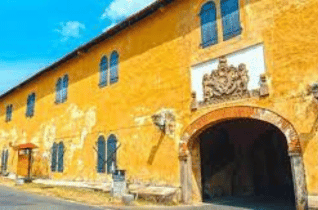
Galle Dutch Fort
Galle Fort is a UNESCO World Heritage Site, originally built by the Portuguese in the 16th century and then further developed by the Dutch and the British over the next 350 years. It covers nearly 4sqkm and is protected by 12 bastions and connecting ramparts. During the early 18th century, the Old Dutch Gate was the entrance to the Fort, but subsequently the British built the Main Gate that is still used today. Buildings of interest include the Dutch Reformed Church, All Saints Church, Amangalla Hotel (formerly the New Oriental Hotel),the lighthouse and bell tower. The Dutch also developed what was then an innovative tide-based sewage-system within the Fort.
Duration: 1 hour
Best time: Year-round
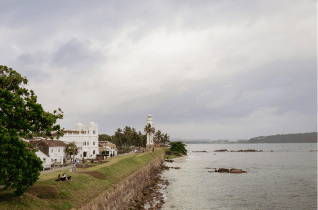
Guided Walk of Galle Fort History and Architecture
One of the most popular holiday destinations in Sri Lanka, Galle Fort is a UNESCO World Heritage Site which once served as a key trading port for the European colonial powers that occupied most of the island for over 300 years between the 16th and 19th centuries. Although first built by the Portuguese, it is commonly referred to as the Dutch Fort, as it was they who heavily fortified it in the 1700s to include ramparts constructed from granite and coral, 14 bastions and cannons to protect the port from invading ships. When the British took control in the 19th century they constructed a variety of administrative buildings, as well as the ‘New Oriental Hotel’ (now called Amangalla),one of the first hotels in Asia.
Duration: 3 hours
Best Time: Year-round
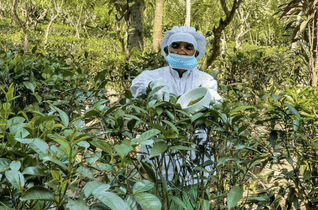
Southern Tea Factory Tour
Ceylon tea can be loosely separated into two types – up country and low country. Low country tea, grown along the small foothills close to Galle, is stronger in colour and taste. Discover more about the types of Sri Lankan tea, its history and how it is grown in this region during an insightful guided walk of the plantation. As you wander, look out for plants such as lemongrass and the versatile jack fruit and brightly-coloured peacocks moving through the undergrowth – if you go in the morning you will also be able to see sari-clad tea pluckers moving methodically through the rows of plants, expertly selecting the right leaves. Afterwards, visit the modern factory to see how the tea is manufactured and transformed.
This activity is best done in the morning, when you can observe the tea-pluckers and the manufacture of the leaves at the factory.
If you want to discover the story of Sri Lanka tea, you could also visit a tea estate in the Sri Lanka hill country.
Duration: 2 hours
Best Time: Year-round
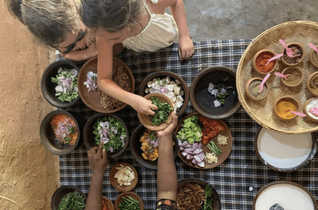
Sri Lankan Cooking Class with a Family
Hop on a tuk-tuk with your host and head on to a nearby market where you can see a variety of vegetables and greens which you can choose from and purchase. Enjoy a refreshing King Coconut once back at your host’s place. This comprehensive cooking class will be conducted in the garden so you will be fanned by the balmy breeze whilst cooking. Learn local cooking techniques such as scraping the coconuts to making coconut milk, marinating meat with spices, tempering and deep frying vegetables. Afterwards, savour your authentic Sri Lankan rice and curry meal – comprised of six different dishes. If you want to feast on your meal like a local, just use your right hand.
If you prefer to learn about the art of Sri Lankan rice and curry in the rural surroundings of a wattle-and-daub hut you might like to consider our alternative Traditional Sri Lankan Cooking Class.
Duration: 3 hours
Best Time: Year-round

Yatagala Temple
Just inland from Galle is Yatagala Raja Maha Viharaya, a fine place to go and visit for temple lovers. This temple is built around and within giant boulder-like rock formations. Quiet and little visited, the temple looks out over paddy fields and small hamlets. It won’t take much time to visit but Yatagala is interesting if as only a comparison to the bigger, famous temples in Sri Lanka.
Duration: 2 hours
Best Time: Year-round
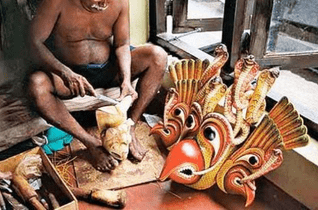
Mask-Making Workshop
Masks have long been an important part of Sri Lankan culture and this hands-on craft session allows you to closely engage with the long-held tradition of mask-carving in Sri Lanka. Today, traditional masks are used mostly in dramas and dance performances, but in rural areas they are still believed to have healing and protective powers. After an introduction to Sri Lankan masks – the various types and their different uses – you can have a go at carving a Kolam mask yourself.
You will learn the fascinating and age-old techniques from your host in Kolam where masks are usually made from a light wood called “Kaduru”. Follow your host’s guidance and observe his techniques as together you mould your creation using traditional and sustainable resources.
Duration: 3 hours
Best Time: Year-round

